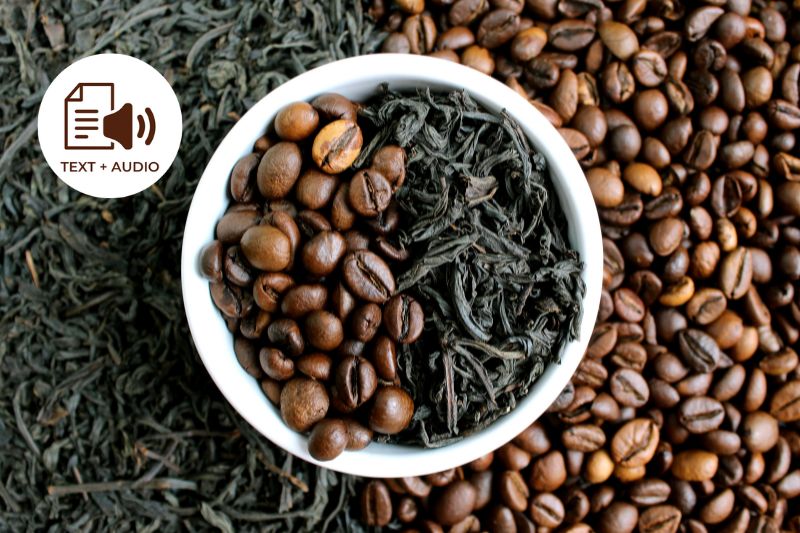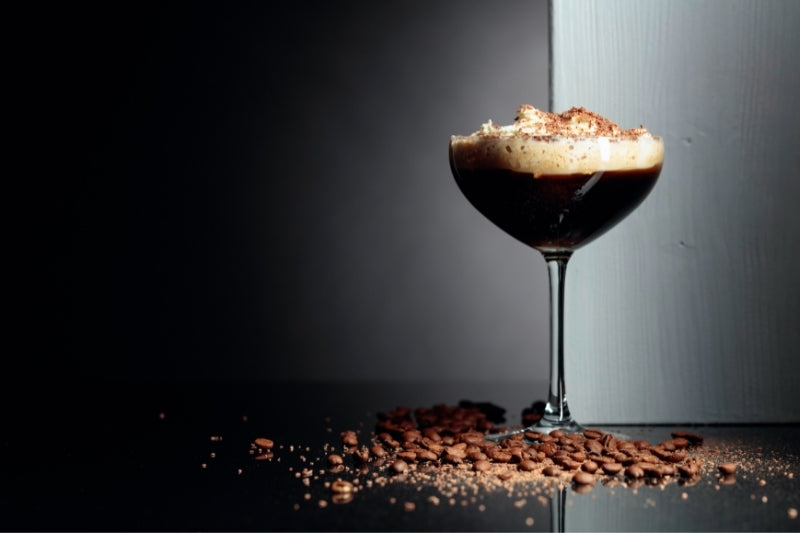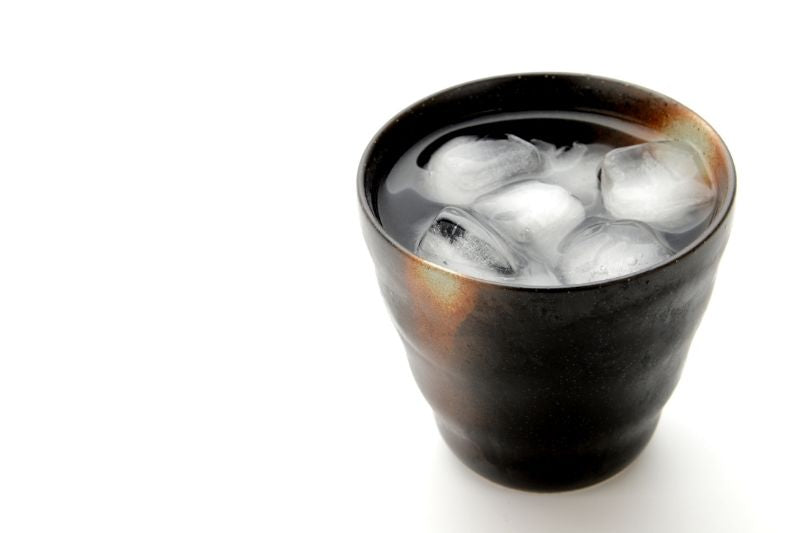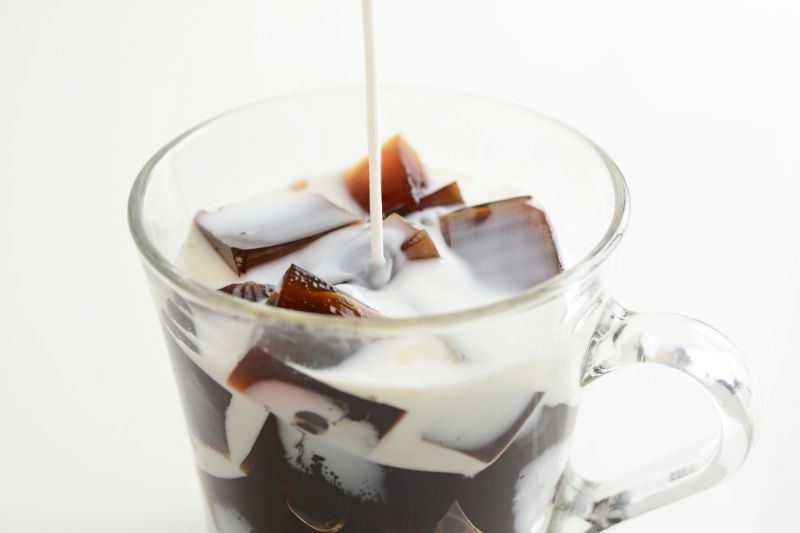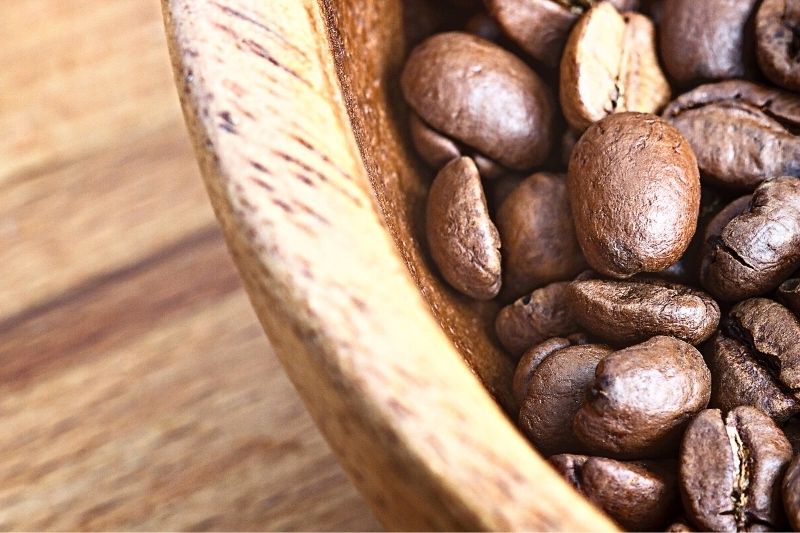How to Make Otemae Coffee – Making Coffee with Japanese Bamboo Whisk (Chasen) お点前珈琲
One of the best things about the art of making coffee is that it is not restricted by rules - coffee brewing is a beautiful expression of personal taste, preference, and passion for coffee and that is why the world of coffee keeps on constantly evolving with new and exciting discoveries being added to it all the time.

A great example of this is Otemae Coffee (お点前珈琲) - coffee made by incorporating aspects of traditional Japanese tea ceremony into coffee making. It involves using the manual bamboo whisk (called Chasen in Japanese, an indispensable tool for Japanese tea ceremony) to create rich, creamy, and delicious froth in coffee. Mixing your coffee with a bamboo whisk? Now that's something you did not see coming, right?! We can even imagine conservative coffee connoisseurs raising their eye-brows and maybe second-guessing it a bit. But that's how coffee and coffee lovers are - they have a way of taking you by surprise, and that so in a good way.
Today we are going to introduce you to this exciting new way of making coffee and afterward, you will be ready to experience a delicious cup of Otemae coffee for yourself!
What is Otemae?
From Matcha sweets to Matcha latte, Matcha is a very common thing associated with the Japanese culture. However, one of the most important ways Matcha is celebrated in the Japanese culture is through the Japanese tea ceremony known as sadō/chadō ("The Way of Tea") or cha-no-yu) which is the traditional method of preparing, drinking, and appreciating powdered Japanese green tea or Matcha. This is considered to be one of the three classical Japanese arts of refinement, is strongly influenced by Zen Buddhism, and has been practiced in Japan since as early as the 11th century! That is why it is very important to understand that the Japanese tea ceremony is not just a casual tea-time with your buddies but everything that has anything to do with the tea ceremony - the ingredients, the accompanying sweets, techniques and styles, and even the simplest tools have deep symbolic meanings, stories, and centuries of history and heritage behind it.

Now coming back to “Otemae” – the art or the way in which the tea ceremony is performed is called “Otemae” and it is a word with a profound significance in the Japanese tea culture. In “Otemae Coffee”, we use an essential tool (we will talk more about this in the next sections) used in the Japanese tea ceremony, and this is why it is primarily called “Otemae Coffee”. However, it is not as simple as that. By using the manual tool, we whisk the coffee with love, respect, attention to detail, and the spirit of “Otemae” we are incorporating the principles of the tea ceremony – “harmony, respect, purity, and tranquility” into coffee making, transforming it from being a procedure into a fulfilling, calming, and meditative experience, which can also be the highest form of hospitality if we are doing it for a guest.
Chasen or Japanese Bamboo Whisk – The main tool for making Otemae Coffee
Chasen is one of the indispensable tools for the Japanese tea ceremony, and probably the most recognized one. It is a special whisk intricately carved out of a single piece of bamboo that has been carefully selected and has been weathered for years. It is usually about 12cm in size and has three basic parts – a handle, a heart (or a core part made by strands tied up together), and numerous fine strands surrounding the core which are also called "strings", "prongs", or "tines". The number of tines or strands can vary anywhere from 16 to 120 and the number and fineness of the strands greatly contribute to the consistency, thickness, quality, and type of the foam or froth that is created by using the whisk.

Not only is it a functional tool, but also a work of art and craftsmanship. In the tea ceremony, the whisk is used to mix the Matcha powder with hot water perfectly so that there is no clumps or grains of powder left, as well as to create a deliciously smooth and rich layer of froth that mellows down the bitterness of Matcha so that the first sip taken from the bowl of Match has a sublime sweetness and a creamy texture instead of the strong bitterness of Matcha. In Otemae coffee, we will try to incorporate the same concept of creating the sublime froth by whisking different parts of coffee such as the espresso, instant coffee, and pour-over coffee, or the milk by using the Chasen bamboo whisk.
Why make coffee using Chasen bamboo whisk?
At this point, you might be thinking well, coffee can be mixed with water using a spoon and milk can be frothed using an electric frothing machine, why go the extra mile to use a bamboo whisk and make "Otemae Coffee"- which is a completely reasonable question. However, we recommend you to read along to know about the huge difference using a bamboo whisk makes in the overall coffee-making experience, and in the end, you just might change your mind!
It creates a mind-blowingly delicious layer of froth in coffee which is not achievable by using other tools
When you stir the coffee using a bamboo whisk, you are incorporating air bubbles into coffee or milk. Because of the meticulously crafted design of the bamboo whisk, the quality, taste, and texture of this froth make the coffee taste truly delicious. If you are familiar with coffee such as espresso, latte, or cappuccino, you will know how important the quality of the 'air incorporated' part such as the 'crema’ for espresso, and “the foam” of latte or cappuccino is for determining the overall quality and taste of the drink.
If the air bubbles are too large and the foam is rough and inconsistent, then the drink will not taste as good as a drink with a rich, uniform, and velvety smooth froth. As it is true for many things in life, the first impression is very important, and the froth is the first sip you take out of these drinks, and hence can hugely affect the overall impression you have of the drink.
It adds the spirit of the Japanese tea ceremony to the coffee-making experience
For many of us, coffee-making can sadly become a daily chore – something we do out of habit and to satisfy our caffeine needs, but that is a terrible way to diminish the potential of what coffee-making can be. When we make "Otemae Coffee", we carefully whisk the coffee or milk by hand, being aware of the spirit and philosophy of the Japanese tea ceremony which is “harmony, respect, purity, and tranquility”. Because of this, the overall coffee-making process is achieving a heightened status from being a 'task' to a meditative, rewarding, and highly enjoyable experience.
From the moment you hold the bamboo whisk in your hand, you feel the warmth and organic touch of wood, which is a lot better than holding a mechanized espresso machine or an electric milk frothing machine. When you start whisking it, you can see the air bubbles slowly expanding the top layer of coffee, transforming the flat surface of the coffee into a magnificent layer of thick foam, enriched with micro-bubbles. Not only is it visually pleasing, but the calming and meditative sound the bamboo whisk makes when you are whisking with it is like pleasant music to the ears that adds a layer of sensory amusement to the coffee-making process. All of these heightens our awareness during the making of “Otemae Coffee" and make us not only physically present in the moment but also mentally and spiritually present and in touch with coffee preparation and appreciation.
How to make Otemae Coffee

To make Otemae Coffee, these are the basic things you will need
- Coffee: It can be instant coffee, a shot of espresso, pour-over coffee, etc.
- Milk: Otemae coffee can be made as plain black coffee without milk but you can also use milk in the recipe to turn it into a coffee drink that is similar to a latte or cappuccino
- Bamboo Whisk or Chasen (For mixing the coffee and to create the froth and this is essential)
- A cup or a mug to hold the coffee in, preferably one with a wider aperture than usual so it allows enough space for the whisking process
- Hot water
- The spirit of Otemae, your undivided attention and time (a few minutes) that you can dedicate to this experience.
Depending on your preference, you can make it with or without milk.
Otemae Coffee without Milk
- Take a bowl or a cup with a wide opening and a good amount of depth.
- Warm up the cup or the bowl using hot water and throw out the water.
- Add the coffee to fill about one-third of the bowl. If you are using instant coffee, you can add the coffee powder first, then add hot water or you can also use black coffee brewed by pour-over or drip.
- Start whisking the coffee using the bamboo whisk (chasen)
- Once you see that a layer of froth consisting of micro-bubble has formed on the top surface of the coffee, it is ready to enjoy!

This is an excellent way to enjoy black coffee, as the frothy layer adds a subtle sweetness, an additional textural element to the coffee, and mellows down the bitterness of coffee, making it velvety and creamy without the addition of milk.
Tips on making delicious coffee
Coffee Type
You can use any kind of coffee you want, but it will be best to use a medium to medium-dark roasts as they will have a richer taste and a fuller body. Also well-balanced coffee with notes such as earthy, nutty, and chocolaty will work very well for this coffee.
Don’t leave the coffee after making
As the foam will start to thin with time, it is best to enjoy the coffee as soon as it is ready so you can enjoy the best of the delicious foam.
Otemae Coffee With Milk
In this type, we will froth the milk instead of the coffee to create a drink similar to a latte.
- Warm up the bowl or the mug using hot water
- Fill up to about 1/3rd of the bowl with warm milk (make sure not to heat the milk too much as the milk will lose its natural sweetness if it is too hot)
- Take your bamboo whisk and start whisking it in the way it was described in the previous section.
- Once the milk has a nice layer of froth it is ready to be mixed with coffee.
- This is a bit of a tricky part and the way you do it will depend on your personal preference.
- You can either add instant coffee dissolved in hot water (or pour-over coffee) to the frothy milk or you can pour the frothy milk on top of the coffee contained in a different bowl and give it one or two gently swirl.
- You can also try frothing both of them separately, but if both of them have thick layers of foam and lots of air bubbles, it might be difficult for the coffee part and the milk part to be combined nicely.

The milk froth created using a bamboo whisk has a delicate and more natural texture compared to one created by an electric frothing machine. It also brings out the natural sweetness of milk perfectly in your coffee drink.
Tips
- For making this drink, it will be best to brew your coffee a bit on the stronger side (more coffee powder for instant coffee, the higher coffee-to-water ratio for pour-over) as the strength of the coffee will be mellowed done a lot by the milk and the creamy froth.
- It is best to use full-fat milk to make your froth as sweet as possible naturally.
Other Variations
Although we introduced you to black and with-milk versions of “Otemae Coffee", there are so many other things you can try doing with the bamboo whisk – the possibilities are truly endless! You can try adding chocolate to make a drink similar to mocha or maybe even add some Matcha powder to see how it tastes.
Maintaining and Cleaning Your Bamboo Whisk
One of the important aspects of Otemae is to respect, care for, and to preserve the tools used in the process. Let’s take a look into how we can maintain the bamboo whisk properly.
Cleaning
- Cleaning of the Bamboo whisk should be done gently as rough handling can damage the delicate structure of the whisk
- Run a gentle stream of water over the bamboo whisk or pour hot water in a bowl and whisk the water until the bamboo whisk is clean and then drain the water out
- Never wash your bamboo whisk with detergent or soap
- Never wash it in a dishwasher
- If it is possible, you might want to keep separate whisks for separate purposes such as one for coffee, one for milk, one for tea, etc. so that flavors (although it might be very subtle) are not transferred from the whisk to the drink you are preparing
Storage
- Make sure not to leave your bamboo whisk standing face down (with the handle at the top) as it will destroy the shape of the whisking part, as well as the individual strings
- The best option is to use a special Chasen holder called Kusenaoshi in Japanese, which is designed in a shape so that the head of the whisk can fit onto it and this helps to preserve the curved shape of the whisk
- If you do not have the holder, you can store it in a cool dry place with the handle at the bottom and the whisking part facing upwards
- How long you can use a bamboo whisk before you have to replace it depends on the quality and type of the whisk, as well as the frequency and the way it is used. A good quality whisk can last up to a year if properly taken care of. When the strings begin to break and chip, or when the curved shape of the Chasen is lost, it will be time to replace it with a new one.
Get Free Bonus Book




